Newsletter Articles
Ground Covers
Written by David S.
Ground covering plants are often short - less than a foot tall - and broad. Their uses in landscaping are generally to provide cover over an area of ground that might otherwise not be attractive, have bare spots, or help control weeds.
In landscape design, ground covers can also find a beautiful use in creating drama and movement around hardscape. Some ground covers are very small and short - one-two inch tall. They can make beautiful additions to walkways and areas where they can trail over an object, such as a retaining wall.
Below is an awesome list of ground covers for Southern California.
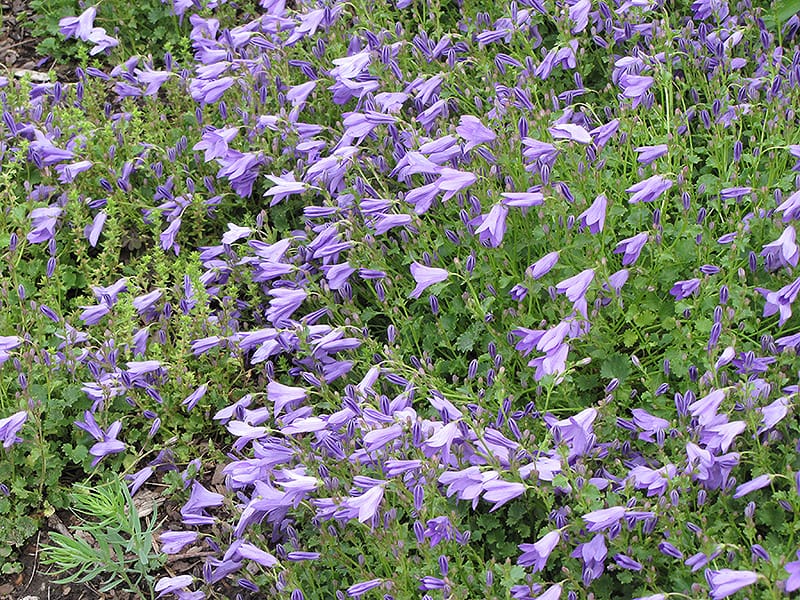
1. Campanula - Shady Lover
Campanula is a beautiful understory ground cover that produces lavender star-like blooms amid heart-shaped leaves. If you are looking for an intermediate ground cover for areas that are more dappled shade than bright sun, Campanula may be a good fit for you. It will need regular water during the hotter times of the year, and it likes the soil to remain moist.
Caring for campanula is not difficult. They need regular water, well-draining soil that holds moisture but is not soggy, and fertilizer now and again. We recommend a 5-10-10 formula.
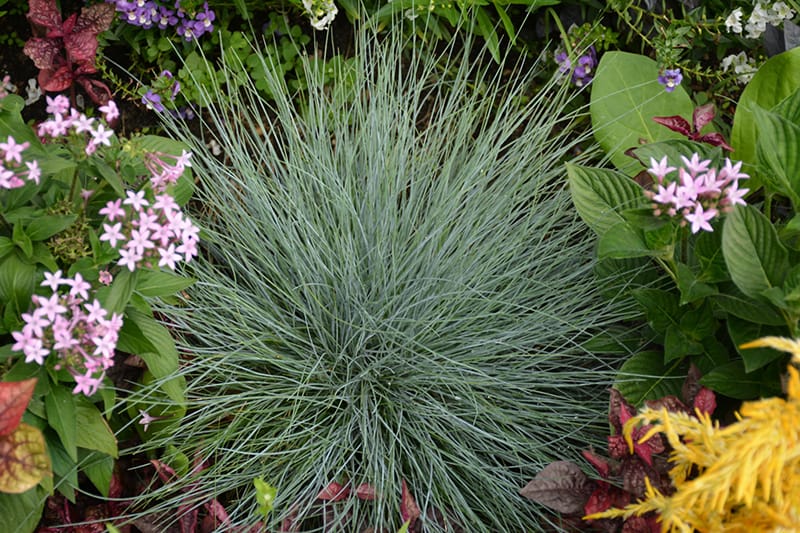
2. Festuca Grass
Festuca grass is a clumping grass with beautiful blue-green fronds. It is a beautiful way to add texture to landscaping and works well in flower beds to fill in gaps between plants.
In landscape design, Festuca grass can be planted along a walkway, in flower beds, or larger spaces as a ground cover. The clumps will widen as the grass grows and becomes established. Due to the unique color, Festuca grass is a good pairing with walkways. It is a little more visible in dark than other grasses.
Caring for Festuca grass is easy. The plant tolerates poor soil and will thrive with just a little encouragement. It likes well-drained soil and water when the top one inch of soil becomes dry.
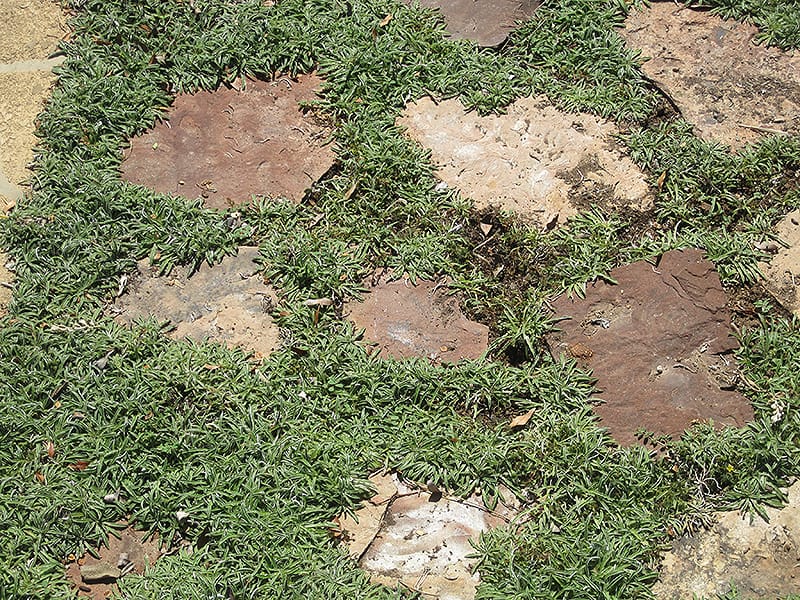
3. Dymondia - Short and Low
When you need a short and low ground cover, Dymondia can be an excellent choice. It is often used as a filler between rocks and along stepping-stone pathways.
In landscape design, Dymondia makes a good filler for larger spaces, and it will tuck itself among larger objects, such as in rock gardens. It has a short trailing nature and will hang somewhat over small structures.
Care - It needs regular watering until established, and then it does not like a lot of water. Dymondia is not frost-tolerant, so plant it in a protected area if your yard freezes in winter.
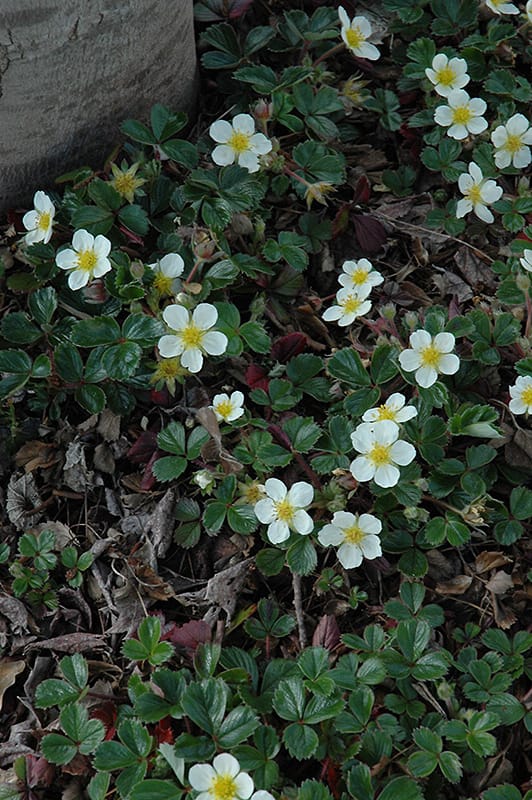
4. Ornamental Strawberry
If you need a ground cover for intermediary spaces between sun and shade, ornamental strawberries are a good fit. Most plants that tolerate some shade need a little more water and the ornamental strawberry is no exception. These are low-growing plants usually under six inches but can be as tall as one foot.
In landscape design, ornamental strawberries make excellent plants for areas where sun and shade trade-off during the day. They will grow as understory plants or hand full sun with some afternoon shade. They have a delightful apple-blossom type flower in white and may produce fruit.
Ornamental strawberries are excellent plants to fill gaps in landscaping and flower beds.
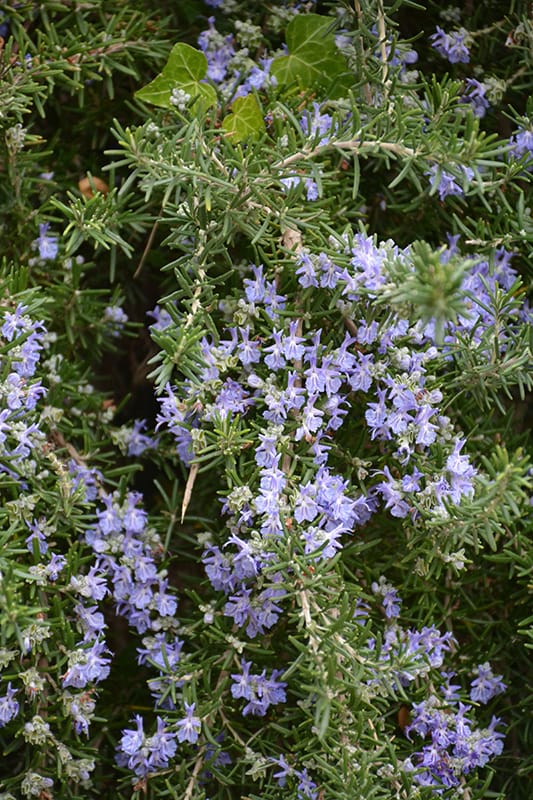
5. Creeping Rosemary
Creeping rosemary brings an old-world vibe to landscaping. Its long and draping tendrils make it a natural for planting along barrier walls and retaining walls. It can also be nice by windows where the oils from the plant will scent the air with its relaxing aromas.
In landscape design, creeping rosemary is a good choice on sloped ground and around larger structures, such as in rock gardens where you want to fill gaps between objects. This is also a good container plant.
Caring for creeping rosemary is fairly easy. The plant is used to poor soils, and it is drought tolerant.
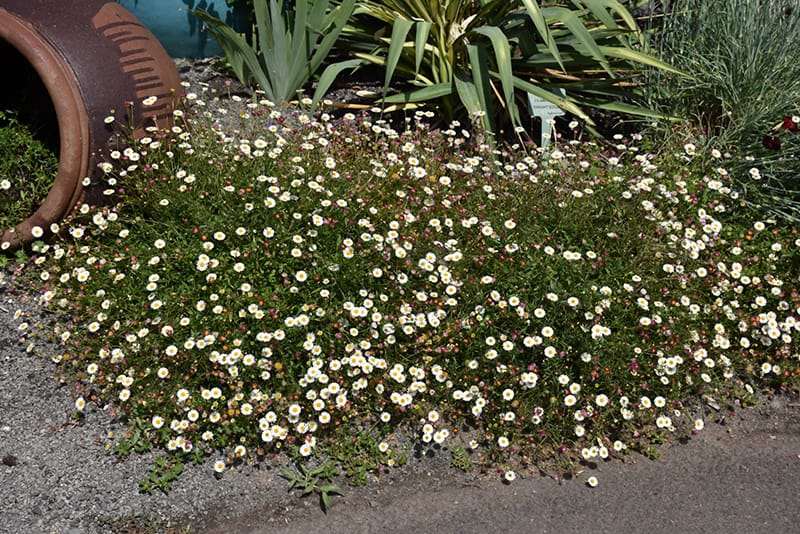
6. Santa Barbara Daisies - Wide Space Filler
If you need a plant to cover a large swath of land, the Santa Barbara Daisy is a good choice. Other plants do not do well around it as it will choke them out and take over.
In landscaping, the Santa Barbara Daisy is excellent as a plant that will cover larger spaces. It offers delightful white flowers throughout the blooming season and can create a lovely meadow-like vista.
Caring for Santa Barbara Daisies is not difficult. If they get leggy, cut them back. They do not mind poor soil but will do well with regular water.
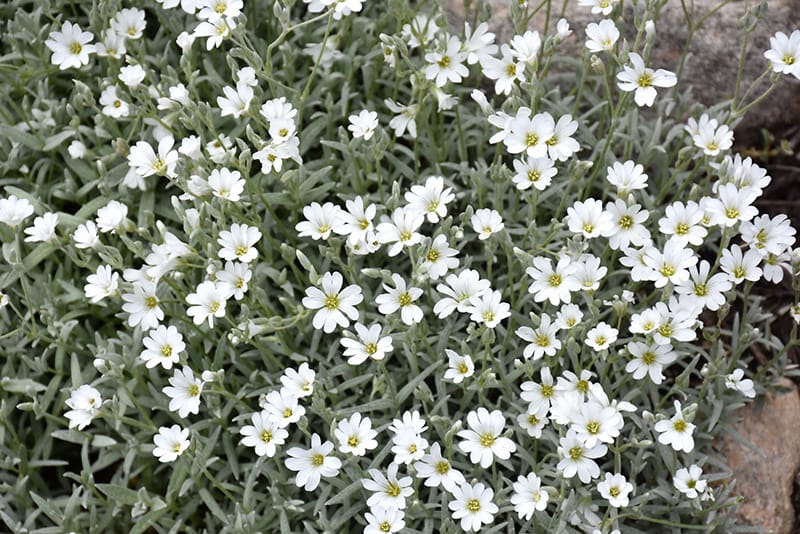
7. Snow in Summer - A carpeting effect
Snow-in-Summer is an excellent ground cover along pathways. Its grey-green leaves help it mark the path in low light and its delightful small white star-shaped flowers add to its beauty.
In landscape design, snow in summer is a good plant to cover large spaces. It will form a thick carpet of grey-green dotted with white flowers. It works well along pathways and will handle some foot traffic.
Care for Snow in Summer is easy. Plant it in full sun and let it be. Water it to keep the ground from totally drying out otherwise it has low water needs.
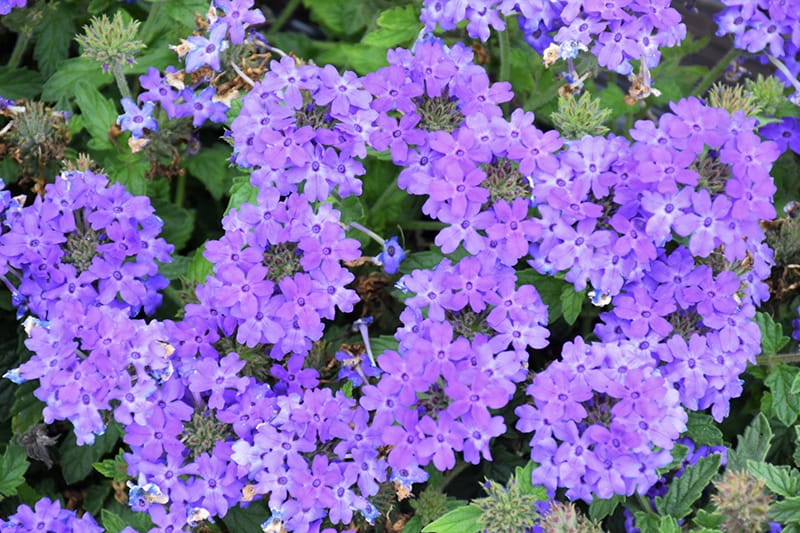
8. Verbena - Bursts of Color
Verbena is a taller ground cover that will flower most of the summer. It also may lose its leaves in the winter and then reappear in spring. It is more fragile in frosts than many ground covers, but it works well to provide cover.
In landscape design, verbena is more of a border plant. It will spread some and works well along pathways and as an edging plant. It also will work well in large spaces if planted thickly.
The care of Verbena is straightforward. Plant it in full sun, water it semi-regularly, and trim it back as needed.
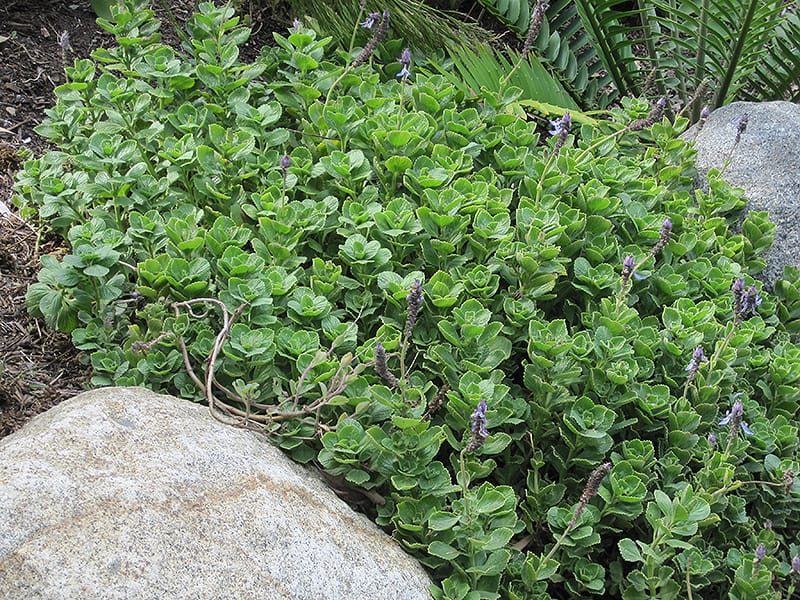
9. Lobster Flower - Hills and Large Areas
The lobster Flower is a succulent that has a structure much like lavender and basil plants. It offers a lovely spike of purple flowers and a soft aroma. It is a taller ground cover in the 8-12 inch range. It does lovely on sloped ground and can help prevent erosion.
In landscape Design, Lobster Flower works well to fill in gaps in small spaces and as a plant that will cover large swaths of open land. It is beautiful while blooming and quite attractive when not.
Care of Lobster Flower is easy. Once established it requires very little care. It will tolerate pruning along pathways but shines on the hilly ground where it is allowed to fill in around larger objects.
Ground covers are very low-maintenance plants. Many are happy in the full sun, while others may prefer more shade than the sun. As a group, they offer benefits for all light settings, many are drought-tolerant, and most will look nice all year long.
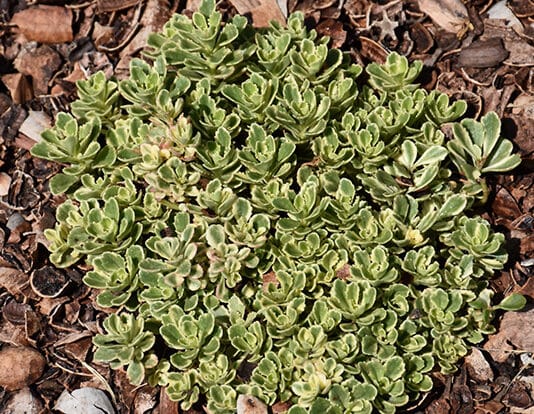
10. Sedum - Full Color and Texture
Another amazing selection for ground covers is sedums. Sedums are succulents, and they come in an array of colors and textures. One of the better features of sedum (and there are many) is its unique flowers.
In landscape design, sedum makes wonderful filler plants or mixed plantings can cover a very large space. They are awesome along walkways and in containers.
These ground covers listed here are a partial list of what is available for Southern California Climates. Stop by any of our Southern California Green Thumb Nursery locations and shop our entire ground cover selection.
Do you like what you see? Sign up for our weekly newsletter to get content like this every week!

